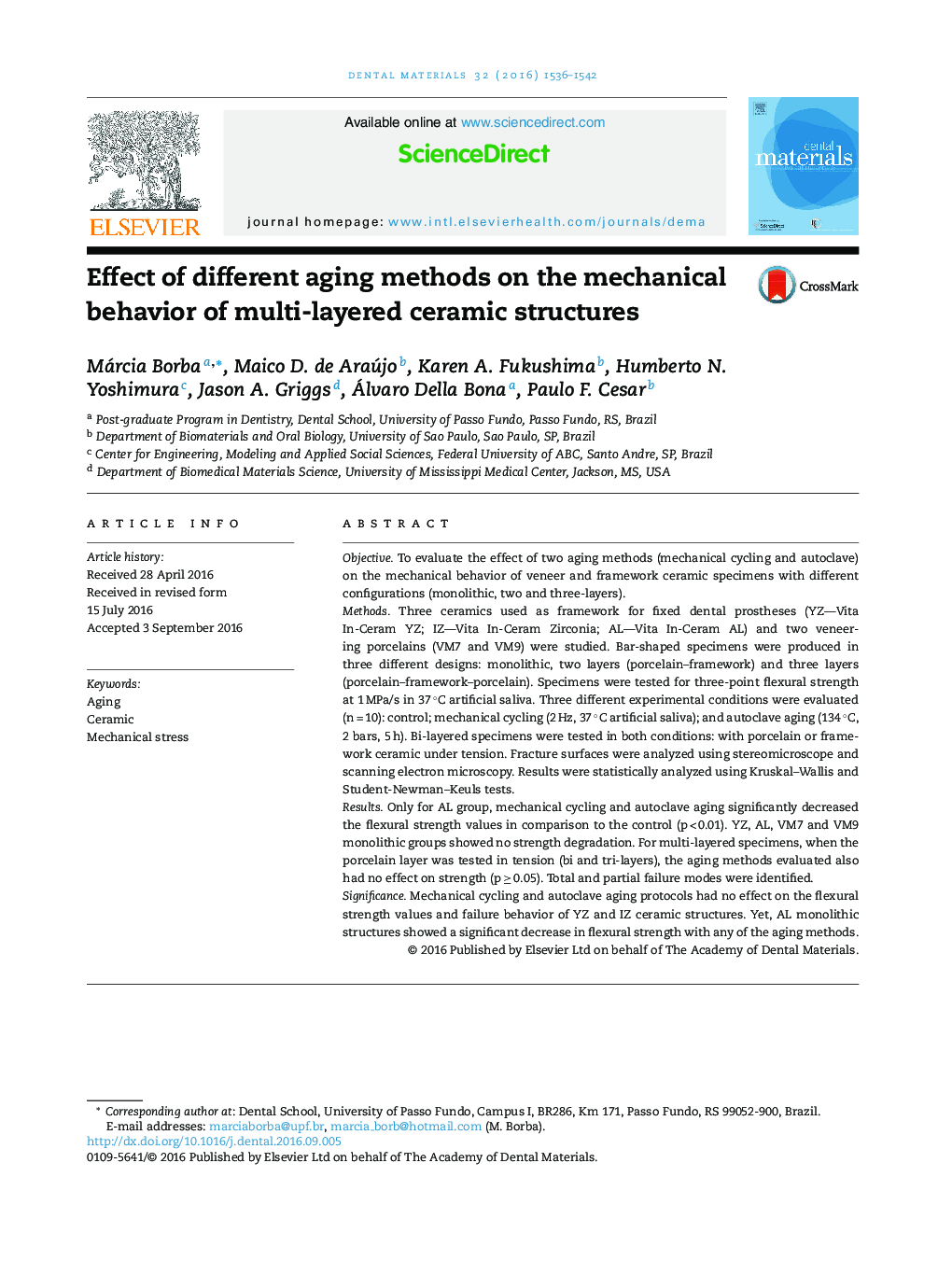| Article ID | Journal | Published Year | Pages | File Type |
|---|---|---|---|---|
| 5433134 | Dental Materials | 2016 | 7 Pages |
ObjectiveTo evaluate the effect of two aging methods (mechanical cycling and autoclave) on the mechanical behavior of veneer and framework ceramic specimens with different configurations (monolithic, two and three-layers).MethodsThree ceramics used as framework for fixed dental prostheses (YZ-Vita In-Ceram YZ; IZ-Vita In-Ceram Zirconia; AL-Vita In-Ceram AL) and two veneering porcelains (VM7 and VM9) were studied. Bar-shaped specimens were produced in three different designs: monolithic, two layers (porcelain-framework) and three layers (porcelain-framework-porcelain). Specimens were tested for three-point flexural strength at 1 MPa/s in 37 °C artificial saliva. Three different experimental conditions were evaluated (n = 10): control; mechanical cycling (2 Hz, 37 °C artificial saliva); and autoclave aging (134 °C, 2 bars, 5 h). Bi-layered specimens were tested in both conditions: with porcelain or framework ceramic under tension. Fracture surfaces were analyzed using stereomicroscope and scanning electron microscopy. Results were statistically analyzed using Kruskal-Wallis and Student-Newman-Keuls tests.ResultsOnly for AL group, mechanical cycling and autoclave aging significantly decreased the flexural strength values in comparison to the control (p < 0.01). YZ, AL, VM7 and VM9 monolithic groups showed no strength degradation. For multi-layered specimens, when the porcelain layer was tested in tension (bi and tri-layers), the aging methods evaluated also had no effect on strength (p â¥Â 0.05). Total and partial failure modes were identified.SignificanceMechanical cycling and autoclave aging protocols had no effect on the flexural strength values and failure behavior of YZ and IZ ceramic structures. Yet, AL monolithic structures showed a significant decrease in flexural strength with any of the aging methods.
